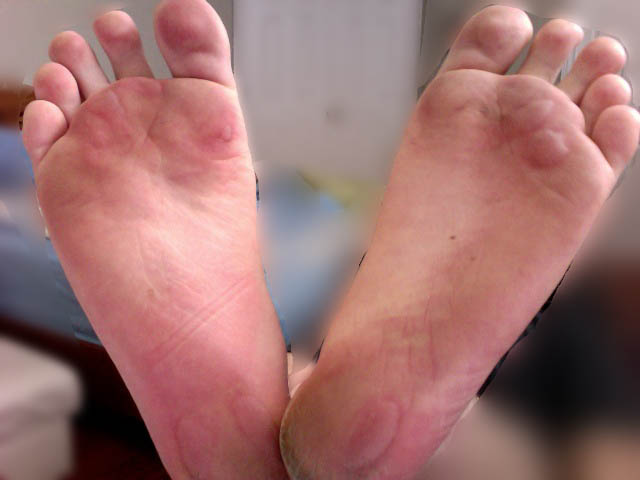
Blisters are a common issue with feet and everyone who wears shoes and exercises will have felt the pain of a blister at some point in their life. Blisters are caused by the increased friction experienced when individuals buy and wear new shoes or run for a prolonged period of time. The friction is caused by a build-up of moisture produced by the foot and this moisture is absorbed into the sock, causing friction. Blisters are difficult to deal with they can be treated in a way that relieves the pain, allowing you to go back to your training without too much bother. This article will describe a number of ways that you can deal with blisters effectively so you can continue training pain-free.
Protect them
The most recommended way to deal with a blister is by actually protecting it. This way, you will not risk popping it and getting an infection, especially if the blister is on the bottom of your feet where there are a lot of harmful bacteria. Even if you have the blister elsewhere on your body, popping it would make it look very unattractive and it may be better to simply cover it up. There are a number of plasters and covers you can apply to blisters and they will ensure it heals naturally without causing any problems. If the blister is a small little pea size, you can let it heal on its own and cover it up with a bandage. If the blister is a little bigger or in an area which you apply weight too (like the bottom of the foot), it may be best to use a donut-shaped moleskin plaster to cover the blister so you can still place pressure on it without it bursting. Depending on the size of the blister it should heal relatively quickly.
Drain them
If the blister is particular painful some individuals drain them. This is not recommended but there are a number of ways to stay safe and make sure that you will not suffer from any hidden infections. When you go to burst your blister make sure that you are using a clean, sterilized needle and are making sure that the liquid is not going to spread all over the foot. Puncture the blister from the side and squeeze the juice out. If you have any medical conditions like diabetes or cancer do not burst your blisters because you are at risk of infection. Once the blister is popped, clean the area and place a plaster over the top to protect it.
How to Prevent Blisters
The best way to tackle a blister is through preventing it in the first place. The best way to prevent a blister is to wear the correct footwear and socks, especially if you are exercising. Socks are the main culprit of blisters so having a pair of compression cotton toe socks can be very beneficial when preventing blisters. Athletic toe socks have little sleeves for your toes that prevent them from rubbing during running and walking. The reduced friction leads to fewer blisters and therefore is an excellent prevention strategy.

